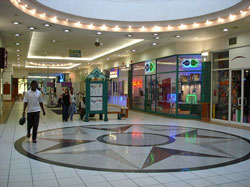
Top stories


EducationFrom adversity to opportunity: African education’s revival strategies
Sanjeev Mansotra 2 days



Marketing & MediaThe Odd Number named Financial Mail AdFocus Mid-Sized Agency of the Year
The Odd Number 2 days

More news












This is according to Fontera's head of strategy and user experience Steve Jones who was a presenter at the recent Consumer Goods Council of SA conference, in Bryanston Johannesburg.
"The fact is that customer now owns us. This is a real problem for business as usual because we are paranoid to change everything we have spent years building up," said Jones.
He gave some key trends that are shaping the retail sector, and giving rise to this paranoia.
We especially don't have more time. In fact we have less time to shop than to clean out homes. In reality a consumer only visits 5 -10% of a store. Most of the time the consumer also is buying from the same categories and same products. The consumer is on autopilot. This is why you have to work stores, i.e. product demos, activations.
This is when, in an online environment, consumers have products in a cart, but then don't purchase these. We send these consumers a friendly reminder together with an incentive to complete the transaction. In ecommerce we can measure this, but in the bricks and mortar store we cannot. Abandoned carts are also found in-store, e.g. if the queue is too long, the cart is abandoned.
Consumers use phones to check the price of a product and then buy it from another channel. Actually this is not the problem. Customers are using their phones because there is no one to help them in-store. Therefore there is an opportunity for mobile in retail.
What happens in-store and what we think happens is a world apart. It is not the price that drives consumers away; consumers leave because they do not feel valuable and are not treated properly. Retail in a store is more important than a helicopter view of a store. So we do the big things well, but it is the small things that change perceptions.
It is not about a lousy store experience, but service that is just not good enough. How do we fix this in a sustainable way, i.e. a low-cost solution that keeps people employed and is do-able every day?
One size does not fit all because shoppers are people. Shopping is a deeply social personal and emotional experience. The shopper has paid 100% of the price and wants 100% back.
Consumers give more time to the shopping experience if they get something in return. A store or brand is only as good as that last experience - there is no loyalty today.
There is bought, owned, and earned media. The message is not blasted out there to the masses. Word of mouth is used to transmit messages. But most experiences in-store are not good enough to talk about. There is an evolution in marketing that must happen for us to deliver tangible value to transform consumers' lives.
For example, take www.hellofresh.co.uk. This is a website where their chefs create recipes that are easy to prepare, balanced and varied. The website sources the ingredients. It delivers - free of charge - the recipe and the box of ingredients to the consumer's doorstep on a Tuesday or Thursday. The consumer prepares his/her own meals.
• The store must be the product experience centre.
• The consumer experience will not be transactional in next few years.
• Do you need an omni-channel approach? Get your one-channel approach right before you tackle the next one.
• Technology must move to the front of the store. Staff must work digitally with tablets.
• In the grocery store arena there is huge opportunity for mobile couponing, information on nutrition etc, but pick your battles carefully.
• People strategy: none of this will work without people. We actually need more people and it is people who are needed to deliver a great experience.
• It is 24/7 and 365 not 360.
• Shopper marketing, CRM, and social media need to be integrated to work together.
